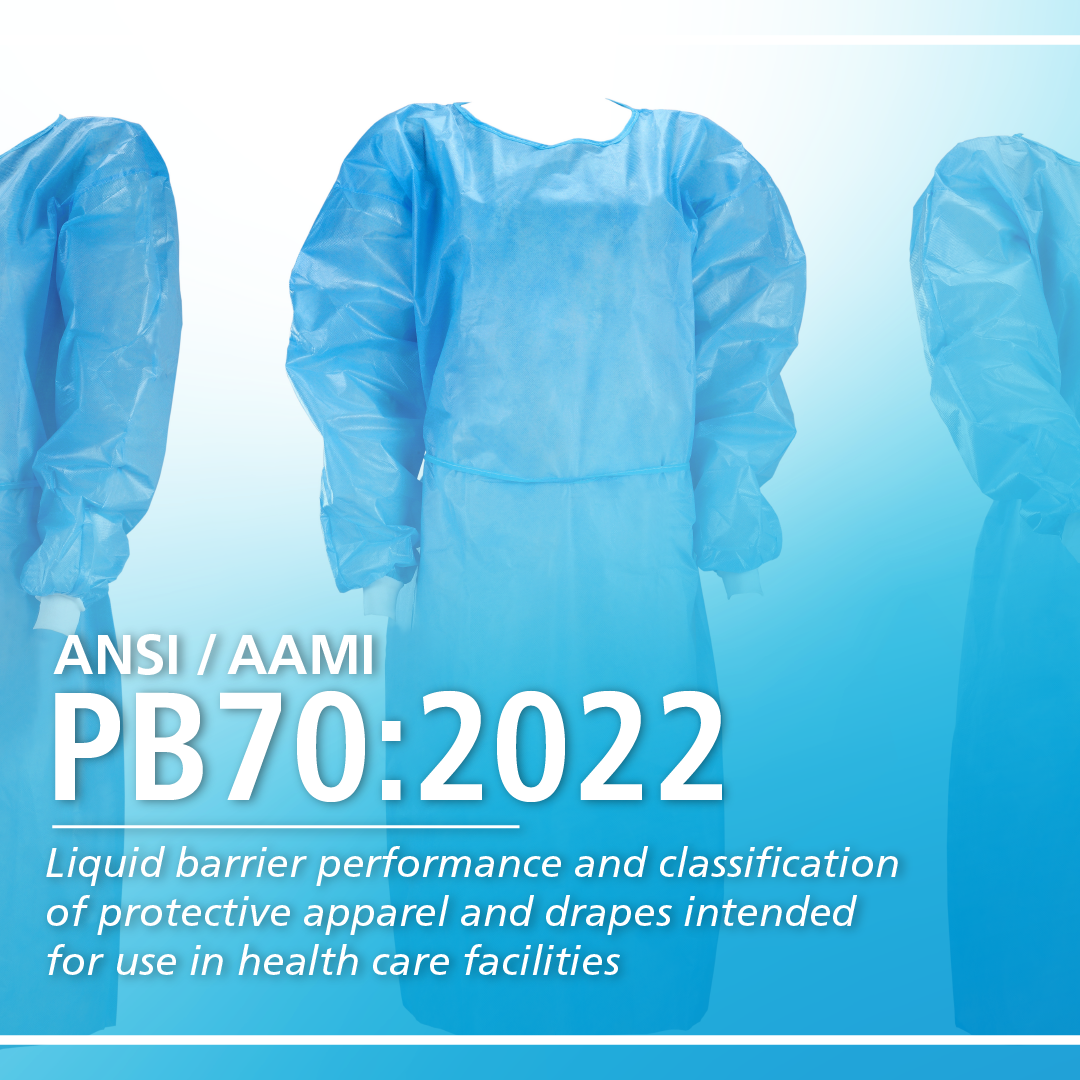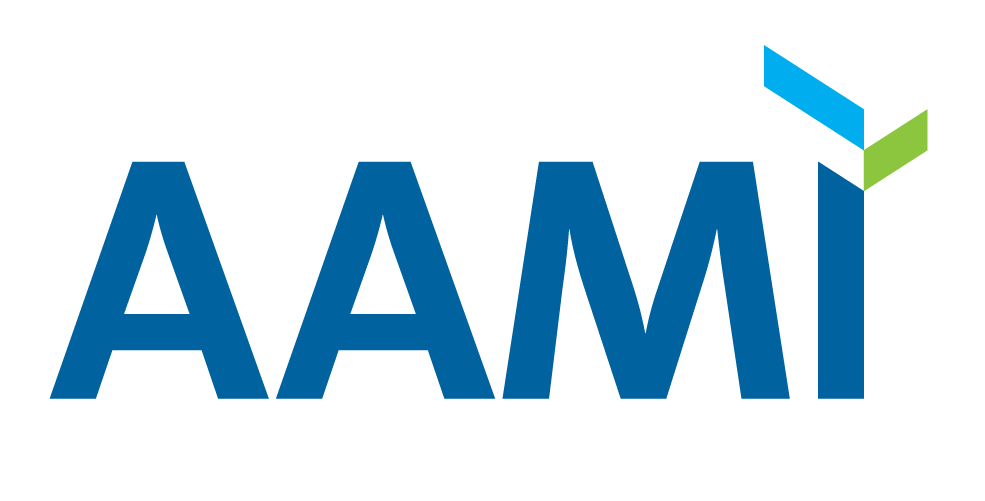ANSI/AAMI PB70:2022

PB70 sets a minimum for the performance of surgical gowns, isolation gowns, other gowns, other protective apparel, surgical drapes, and drape accessories designed to protect healthcare workers during surgery and other healthcare procedures. That performance is based on the ability of these protective barriers to prevent exposure to blood, body fluids, and other potentially infectious materials. It also establishes an industry-wide classification system and associated labeling requirements for these various gowns and drapes.
What's New in the 2022 Version?
Additional protective apparel categories added to PB70 include:
- Surgical Gown–E: A specialized gown which provides extended protection of critical zones—defined as the areas where direct contact with blood, bodily fluids, and other potentially infectious material is most likely to happen.
- Non-surgical Protective Gowns: including procedure gowns and decontamination gowns
These non-surgical gown categories also include “protective full coverage gowns, protective gowns with non-protective backs, and protective gowns with open backs,” the authors explained. “Protective hoods and togas were also added along
with a general category of other protective apparel items. (e.g., aprons, footwear covers, sleeves, etc.).”
Labeling requirements were also added for each type of non-surgical gown, stating that the gown packaging should inform users of the area of protection:
- Full Coverage Gown
- Non-protective Back Gown
- Open Back Gown
While PB70 is intended to be used primarily by device manufacturers in qualifying, classifying, and labeling the barrier performance of their products, understanding the protective properties each label promises will also prove invaluable for healthcare professionals, so they may make informed decisions when selecting appropriate PPE.
The document does not cover PPE equipment such as medical gloves, surgical masks, or goggles, nor is there an industry consensus for best practices concerning the gown-to-glove interface.
Take Advantage of our Volume Discount
| COPIES | DISCOUNT | COPIES | DISCOUNT |
|---|---|---|---|
| 11-25 | 10% | 101-200 | 30% |
| 26-50 | 20% | 201-300 | 35% |
| 51-100 | 25% | 300+ | 40% |
